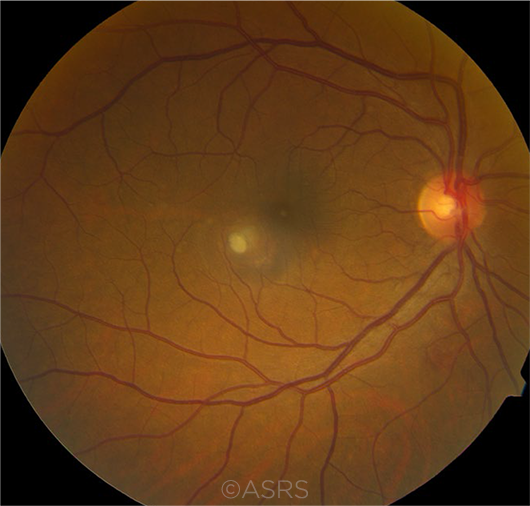Download PDF
For presumed infectious endophthalmitis, needle vitreous tap and mechanical vitreous biopsy with pars plana vitrectomy (PPV) were more likely to yield culture growth than was an aqueous tap, according to a study from Duke University Eye Center in Durham, North Carolina.1
Positive microbial cultures were found in 29% (17/59) of aqueous samples—versus 47% (26/55) of needle vitreous tap samples and 59% (19/32) of samples obtained from mechanical vitreous biopsy with PPV.
 |
ETIOLOGIES. Only 26% of the cases of endophthalmitis occurred following cataract surgery. This image was originally published in the ASRS Retina Image Bank. Gregg T. Kokame, MD, and James C. Lai, MD, Retina Consultants of Hawaii. Endophthalmitis. Retina Image Bank. 2012; Image Number 1349. © The American Society of Retina Specialists.
|
Following in the steps of the EVS. This retrospective study of chart data from nine years of endophthalmitis cases at Duke was intended to augment the results of the Endophthalmitis Vitrectomy Study (EVS), said coauthors Henry L. Feng, MD, and Cason B. Robbins, BS. Twenty-five years ago, the EVS gave ophthalmologists an evidence-based road map for identifying and treating endophthalmitis after cataract surgery.2 However, the landmark trial did not provide guidance for cases with other etiologies, the Duke researchers pointed out.
Need for clarity. “We’re seeing endophthalmitis after [intravitreal] injections, glaucoma procedures, corneal procedures, and trauma—and the list goes on,” said Dr. Feng. “And we just don’t have a lot of evidence-based guidance on what to do for endophthalmitis in those cases because the EVS included only postcataract surgery and postsecondary IOL patients who developed endophthalmitis.”
Additional findings. In addition to evaluating microbiological yield, the researchers assessed etiologies and clinical practice patterns for endophthalmitis treated at Duke from Jan. 1, 2009, to Jan. 1, 2018.
Of 130 consecutive cases (133 eyes), 26% were related to cataract surgery. The three other most common etiologies were endogenous (20%), intravitreal injection (17%), and post-trabeculectomy (15%). All of the isolated bacteria were sensitive to combination therapy with vancomycin and ceftazidime.
In several cases, Duke physicians also performed vitrectomy in patients whose vision at initial presentation was better than those who underwent vitrectomy in the EVS, Dr. Feng said. “At least among the experts at Duke over the last nine years, we can see that vitrectomy is being considered for noncataract cases when the presenting vision is about hand motion at 1 foot. In contrast, the EVS data suggested that vitrectomy was beneficial only for patients with presenting vision of light perception or worse,” Dr. Feng added. “This finding may reflect today’s safer surgeries with the advent of smaller-gauge instrumentation and other technological advances.”
—Linda Roach
___________________________
1 Feng HL et al. Ophthalmol Retina. Published online March 18, 2020.
2 Endophthalmitis Vitrectomy Study Group. Arch Ophthalmol. 1995;113(12):1479-1496.
___________________________
Relevant financial disclosures—Dr. Feng and Mr. Robbins: None.
For full disclosures and the disclosure key, see below.
Full Financial Disclosures
Dr. Feng None.
Dr. Gibbons None.
Mr. Glassman None.
Dr. Gupta None.
Dr. Koch Alcon: C; Carl Zeiss Meditec: C; CapsuLaser: O; Johnson & Johnson Surgical Vision: C; Ivantis: O; Perfect Lens: C; Vivior: O.
Dr. Leung None.
Mr. Robbins None.
Dr. Wygnanski-Jaffe GoCheck Kids: C; NovaSight: C.
Disclosure Category
|
Code
|
Description
|
| Consultant/Advisor |
C |
Consultant fee, paid advisory boards, or fees for attending a meeting. |
| Employee |
E |
Employed by a commercial company. |
| Speakers bureau |
L |
Lecture fees or honoraria, travel fees or reimbursements when speaking at the invitation of a commercial company. |
| Equity owner |
O |
Equity ownership/stock options in publicly or privately traded firms, excluding mutual funds. |
| Patents/Royalty |
P |
Patents and/or royalties for intellectual property. |
| Grant support |
S |
Grant support or other financial support to the investigator from all sources, including research support from government agencies (e.g., NIH), foundations, device manufacturers, and/or pharmaceutical companies. |
|
More from this month’s News in Review